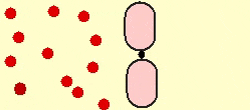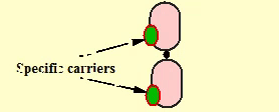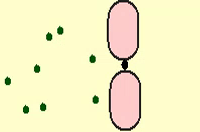After oral administration, the drug molecules have to be transported across biological membranes before reaching the systemic circulation. This can happen by several mechanisms:
b-:
- Active transport
- Facilitated diffusion
d-Others:
Such as pinocytosis, phagocytosis, presorption, and potocytosis
Membrane
Passive diffusion

Drug molecules cross the membrane by simple diffusion from higher to lower concentration.
Carrier mediated transport

carriers help to transfer the drug molecules across the membrane.
Paracellular

Drug molecules cross the membrane through the small pores between the cells.



